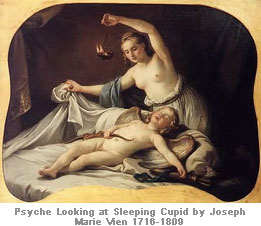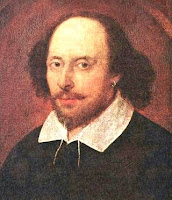The various organs which are involved in the production of speech sounds are called speech organs (also known as vocal organs). The study of speech organs helps to determine the role of each organ in the production of speech sounds. They include the lungs, the vocal folds, and most importantly the articulators.
The opening of the vocal folds takes different positions:
Thus it is clear that the main function of the vocal folds is to convert the air delivered by the lungs into audible sound. The opening and closing process of the vocal folds manipulates the airflow to control the pitch and the tone of speech sounds. As a result, we have different qualities of sounds.
b. The Hard Palate: The hard palate is the concave part of the roof of the mouth. It is situated on the middle part of the roof.
c. The Velum or Soft Palate: The lower part of the roof of the mouth is called the soft palate. It could be lowered or raised. When it is lowered, the air stream from the lungs has access to the nasal cavity. When it is raised the passage to the nasal cavity is blocked. The sounds which are produced touching this area with the back of the tongue are called velar sounds. For example: /k/g/.
b. Spread: The lips can be spread. In this position, the lips are moved away from each other (i.e. when we smile). The vowel that we articulate from this position is an unrounded one. For example, in English, /i: /is a long vowel with slightly spread lips.
c. Neutral: Again, the lips can be neutral, a position where the lips are not noticeably rounded or spread. And the articulated vowel from this position is referred to as unrounded vowel. For example, in English /ɑ: / is a long vowel with neutral lips.
a. The tip: It is the extreme end of the tongue.
Yule, George. The Study of Language. 2nd ed. Cambridge: CUP, 1996. 40-50.
Varshney, Dr. R.L. An Introduction of Linguistics & Phonetics. Dhaka: BOC, n.d. 38-42.
NB This Article is Essentially in the Tentative Stage. Further Revision is Required.
1. The Lungs
The airflow is by far the most vital requirement for producing speech sound since all speech sounds are made with some movement of air. The lungs provide the energy source for the airflow. The lungs are the spongy respiratory organs situated inside the rib cage. They expand and contract as we breathe in and out air. The amount of air accumulated inside our lungs controls the pressure of the airflow.2. The Larynx & the Vocal Folds
The larynx is colloquially known as the voice box. It is a box-like small structure situated in the front of the throat where there is a protuberance. For this reason, the larynx is popularly called the Adam’s apple. This casing is formed of cartilages and muscles. It protects as well as houses the trachea (also known as windpipe, oesophagus, esophagus) and the vocal folds (formerly they were called vocal cords). The vocal folds are like a pair of lips placed horizontally from front to back. They are joined in the front but can be separated at the back. The opening between them is called the glottis. The glottis is considered to be in open state when the folds are apart, and when the folds are pressed together the glottis is considered to be in close state.The opening of the vocal folds takes different positions:
- Wide Apart: When the folds are wide apart they do not vibrate. The sounds produced in such position are called breathed or voiceless sounds. For example: /p/f/θ/s/.
- Narrow Glottis: If the air is passed through the glottis when it is narrowed then there is an audible friction. Such sounds are also voiceless since the vocal folds do not vibrate. For example, in English /h/ is a voiceless glottal fricative sound.
- Tightly Closed: The vocal folds can be firmly pressed together so that the air cannot pass between them. Such a position produces a glottal stop / ʔ / (also known as glottal catch, glottal plosive).
- Touched or Nearly Touched: The major role of the vocal folds is that of a vibrator in the production of speech. The folds vibrate when these two are touching each other or nearly touching. The pressure of the air coming from the lungs makes them vibrate. This vibration of the folds produces a musical note called the voice. And sounds produced in such manner are called voiced sounds. In English all the vowel sounds and the consonants /v/z/m/n/are voiced.
Thus it is clear that the main function of the vocal folds is to convert the air delivered by the lungs into audible sound. The opening and closing process of the vocal folds manipulates the airflow to control the pitch and the tone of speech sounds. As a result, we have different qualities of sounds.
3. The Articulators
Articulators transform the sound into intelligible speech. They can be either active or passive. They include the pharynx, the teeth, the alveolar ridge behind them, the hard palate, the softer velum behind it, the lips, the tongue, and the nose and its cavity. Traditionally the articulators are studied with the help of a sliced human head figure like the following:
(i) The Pharynx: The pharynx lies between the mouth and the food passage, that is, just above the larynx. It is just about 7cm long in the case of women and 8cm long in the case of men.
(ii) The Roof of the Mouth: The roof of the mouth is considered as a major speech organ. It is divided into three parts:
a. The Alveolar Ridge/Teeth Ridge: The alveolar ridge is situated immediately after the upper front teeth. The sounds which are produced touching this convex part are called alveolar sounds. Some alveolar sounds in English include: /t/d/.
b. The Hard Palate: The hard palate is the concave part of the roof of the mouth. It is situated on the middle part of the roof.
c. The Velum or Soft Palate: The lower part of the roof of the mouth is called the soft palate. It could be lowered or raised. When it is lowered, the air stream from the lungs has access to the nasal cavity. When it is raised the passage to the nasal cavity is blocked. The sounds which are produced touching this area with the back of the tongue are called velar sounds. For example: /k/g/.
(iii) The Lips: The lips also play an important role in the matter of articulation. They can be pressed together or brought into contact with the teeth. The consonant sounds which are articulated by touching two lips each other are called bilabial sounds. For example, /p/ and /b/ are bilabial sounds in English. Whereas, the sounds which are produced with the lip to teeth contact are called labiodental sounds. In English, there are two labiodental sounds: /f/ and /v/.
Another important thing about the lips is that they can take different shapes and positions. Therefore, lip-rounding is considered as a major criterion for describing vowel sounds. The lips may have the following positions:
a. Rounded: When we pronounce a vowel, our lips can be rounded, a position where the corners of the lips are brought towards each other and the lips are pushed forwards. And the resulting vowel from this position is a rounded one. For example, /ə ʊ/.
b. Spread: The lips can be spread. In this position, the lips are moved away from each other (i.e. when we smile). The vowel that we articulate from this position is an unrounded one. For example, in English, /i: /is a long vowel with slightly spread lips.
c. Neutral: Again, the lips can be neutral, a position where the lips are not noticeably rounded or spread. And the articulated vowel from this position is referred to as unrounded vowel. For example, in English /ɑ: / is a long vowel with neutral lips.
(iv) The Teeth: The teeth are also very much helpful in producing various speech sounds. The sounds which are made with the tongue touching the teeth are called dental sounds. Some examples of dental sounds in English include: /θ/ð/.
(v) The Tongue: The tongue is divided into four parts:
a. The tip: It is the extreme end of the tongue.
b. The blade: It lies opposite to the alveolar ridge.
c. The front: It lies opposite to the hard palate.
d. The back: It lies opposite to the soft palate or velum.
The tongue is responsible for the production of many speech sounds since it can move very fast to different places and is also capable of assuming different shapes. The shape and the position of the tongue are especially crucial for the production of vowel sounds. Thus when we describe the vowel sounds in the context of the function of the tongue, we generally consider the following criteria:
• Tongue Height: It is concerned with the vertical distance between the upper surface of the tongue and the hard palate. From this perspective, the vowels can be described as close and open. For instance, because of the different distance between the surface of the tongue and the roof of the mouth, the vowel /i: /has to be described as a relatively close vowel, whereas /æ / has to be described as a relatively open vowel.
• Tongue Frontness / Backness: It is concerned with the part of the tongue between the front and the back, which is raised high. From this point of view, the vowel sounds can be classified as front vowels and back vowels. By changing the shape of the tongue we can produce vowels in which a different part of the tongue is the highest point. That means a vowel having the back of the tongue as the highest point is a back vowel, whereas the one having the front of the tongue as the highest point is called a front vowel. For example: during the articulation of the vowel / u: / the back of the tongue is raised high, so it’s a back vowel. On the other hand, during the articulation of the vowel / æ / the front of the tongue is raised high, therefore, it’s a front vowel.
(vi) The Jaws: Some phoneticians consider the jaws as articulators since we move the lower jaw a lot at the time of speaking. But it should be noted that the jaws are not articulators in the same way as the others. The main reason is that they are incapable of making contact with other articulators by themselves.
(vii) The Nose and the Nasal Cavity: The nose and its cavity may also be considered as speech organs. The sounds which are produced with the nose are called nasal sounds. Some nasal sounds in English include: /m/n/ŋ/.
References
Harmer, Jeremy. The Practice of English Language Teaching. 3rd ed. England: Longman-
Pearson, 2001. 28-35.
Yule, George. The Study of Language. 2nd ed. Cambridge: CUP, 1996. 40-50.
Varshney, Dr. R.L. An Introduction of Linguistics & Phonetics. Dhaka: BOC, n.d. 38-42.
NB This Article is Essentially in the Tentative Stage. Further Revision is Required.














































